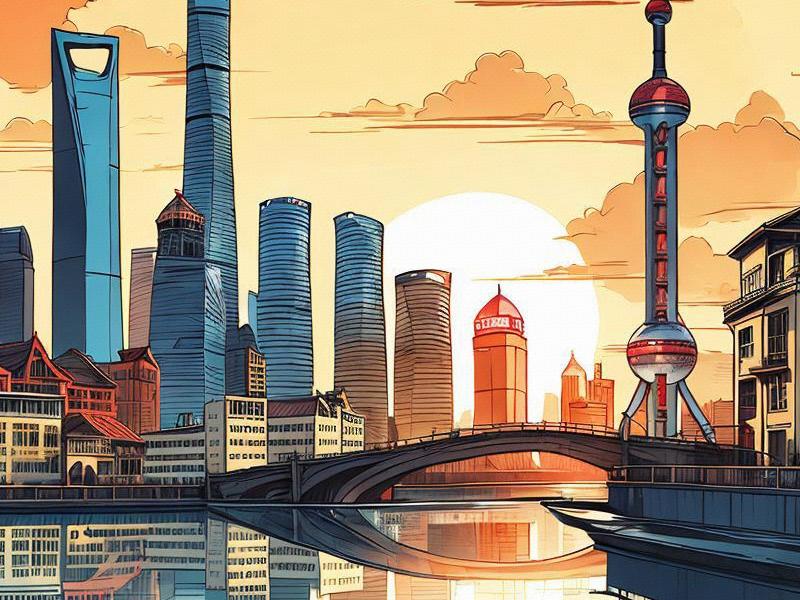This article delves into the remarkable transformation of Shanghai, exploring its evolution from a historical port city to a global economic hub. It highlights the city's efforts in balancing modernization with the preservation of its rich cultural heritage, and examines the various facets of Shanghai's renaissance.

Shanghai, the bustling metropolis on the banks of the Huangpu River, has long been a symbol of China's rapid economic and social transformation. Over the past few decades, this city has undergone a remarkable renaissance, evolving from a historical port city into a global economic hub and cultural powerhouse.
The story of Shanghai's renaissance is one of contrasts and coexistence. On one hand, the city is a testament to modernity, with its gleaming skyscrapers, state-of-the-art infrastructure, and vibrant international community. On the other hand, it is a city that has carefully preserved its historical and cultural heritage, offering visitors a glimpse into its rich past.
The architectural landscape of Shanghai is a perfect reflection of this duality. In the Pudong district, the iconic Oriental Pearl Tower and the futuristic Shanghai Tower dominate the skyline, symbolizing the city's ambition and progress. These modern skyscrapers stand in stark contrast to the historic Bund on the other side of the Huangpu River, where colonial-era buildings from the 19th and early 20th centuries have been meticulously preserved. The Bund offers a window into Shanghai's colonial past, with its neoclassical architecture and beautiful views of the modern city across the river.
One of the key factors behind Shanghai's renaissance has been its strategic location and role as a major port city. Since the opening of the port to foreign trade in the 19th century, Shanghai has been at the crossroads of global commerce. This historical advantage has continued to fuel the city's economic growth, attracting multinational corporations, international organizations, and a diverse expatriate community.
新夜上海论坛 In recent years, Shanghai has also emerged as a cultural hub, hosting numerous international events and festivals. The city's vibrant art scene, world-class museums, and thriving theater and music scenes have made it a magnet for artists, performers, and cultural enthusiasts from around the globe. The Shanghai International Film Festival, for example, is one of the most prestigious film festivals in Asia, attracting filmmakers and audiences from all over the world.
However, Shanghai's renaissance is not without its challenges. As the city continues to grow and modernize, there is a constant need to balance development with the preservation of its historical and cultural heritage. The local government has taken significant steps to address this issue, implementing policies and initiatives aimed at protecting the city's unique character.
One such initiative is the designation of historic districts and the restoration of old buildings. The former French Concession, for instance, has been transformed into a charming area filled with boutique shops, cafes, and art galleries, while still retaining its historical charm. Similarly, the Yu Garden and the surrounding Old City area have been carefully restored to preserve their traditional architecture and cultural significance.
Another important aspect of Shanghai's renaissance is its commitment to sustainability and environmental protection. The city has invested heavily in green infrastructure, renewable energy, and public transportation systems to reduce its carbon footprint and improve the quality of life for its residents. The Maglev train, which connects Pudong International Airport to the city center, is a prime example of Shanghai's commitment to sustainable transportation.
上海喝茶服务vx
Education and innovation are also key drivers of Shanghai's renaissance. The city is home to some of the top universities and research institutions in China, attracting students and scholars from around the world. Shanghai's focus on innovation and technology has made it a leader in fields such as artificial intelligence, biotechnology, and green energy.
The people of Shanghai are at the heart of the city's renaissance. With its diverse population and inclusive culture, Shanghai is a melting pot of different traditions, languages, and lifestyles. The city's residents are known for their entrepreneurial spirit, adaptability, and openness to new ideas, which have been instrumental in driving the city's development.
Tourism is another important aspect of Shanghai's renaissance, attracting millions of visitors each year. The city offers a wide range of attractions, from its world-famous shopping districts and gourmet restaurants to its historical landmarks and cultural festivals. Visitors can explore the Bund, take a Huangpu River cruise, visit the Shanghai Museum, or stroll through the charming streets of the French Concession.
上海贵族宝贝sh1314 Despite its rapid growth and modernization, Shanghai remains deeply connected to its roots. The city's rich history and cultural heritage are not just preserved but celebrated, providing a sense of identity and continuity for its residents. This blend of old and new, tradition and innovation, is what makes Shanghai such a unique and fascinating city.
Looking ahead, Shanghai's renaissance is set to continue. The city has ambitious plans for further development, including the expansion of its transportation network, the creation of new business districts, and the promotion of sustainable urban living. At the same time, efforts will be made to preserve the city's historical and cultural heritage, ensuring that future generations can enjoy and learn from its rich past.
In conclusion, Shanghai's renaissance is a story of transformation, resilience, and cultural revival. It is a city that has successfully balanced modernization with the preservation of its historical and cultural heritage, making it a unique and vibrant metropolis. As Shanghai continues to grow and evolve, it remains a beacon of China's progress and a symbol of the possibilities of urban development in the 21st century.